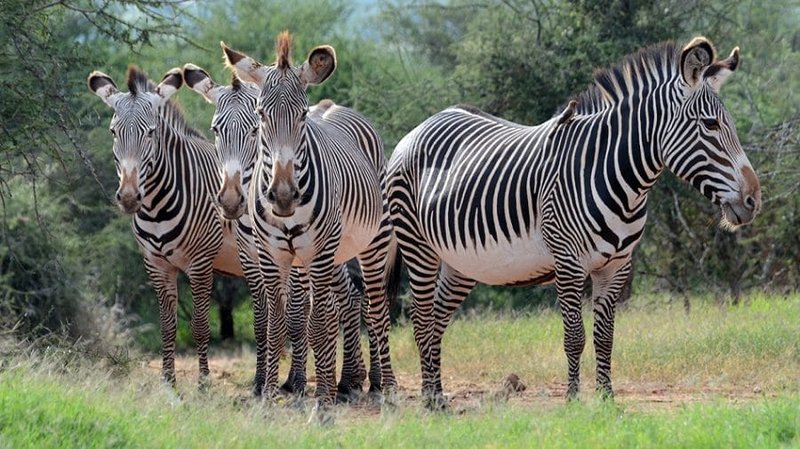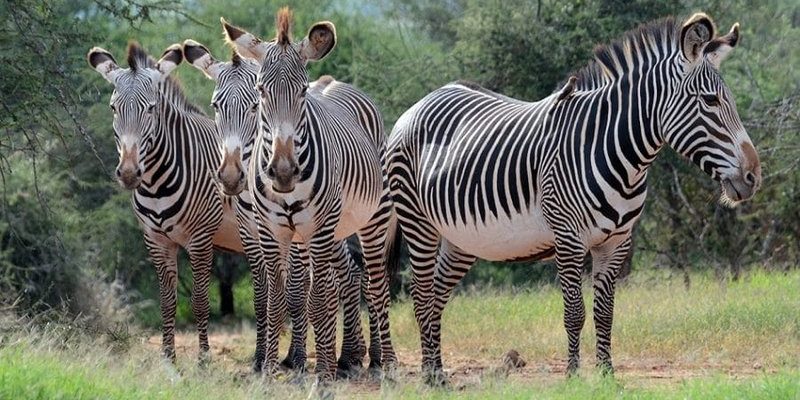
You might be wondering where in the world you can find Grevy’s zebras and what kind of environments they prefer. Let’s dive into their habitat and distribution to explore the lands where these remarkable animals roam.
Understanding the Natural Habitat of Grevy’s Zebras
Grevy’s zebras are primarily found in the **dry savannas and grasslands** of East Africa. Their range extends across parts of Ethiopia and northern Kenya, where the climate is mostly dry and semi-arid. Imagine vast open spaces dotted with shrubs and a few scattered trees—a landscape that provides the right mix of food and shelter for these elegant animals.
These zebras prefer habitats that feature **short, nutritious grasses** because they graze on them to sustain their energy levels. Their unique adaptations allow them to thrive in environments where water isn’t always readily available. Rather than depending on rivers or lakes, Grevy’s zebras can travel long distances in search of food and water, showcasing their resilience in tougher climates.
Geographic Distribution of Grevy’s Zebras
The Grevy’s zebra is mainly located in a few specific regions, which makes their distribution quite limited compared to other zebra species. Their range was once much broader, but due to habitat loss and human activity, they’ve become increasingly localized.
In Kenya, you’ll find them in reserves like **Samburu National Reserve** and **Buffalo Springs National Reserve**. These protected areas are crucial for their survival as they offer a relatively safe haven from poaching and habitat destruction. In Ethiopia, populations exist in areas like the **Awash National Park**, where efforts are being made to monitor and protect these amazing creatures.
Climate Preferences and Adaptations
Grevy’s zebras have adapted to the hot, dry climates of East Africa. These zebras are more tolerant of heat than many other zebra species, thanks to their **thinner coats** and higher tolerance for water deprivation. You could say they are like the ultimate survivors of the savanna.
During the **hot season**, Grevy’s zebras tend to be more active during the cooler hours of the day, grazing early in the morning or late in the afternoon. This behavior helps them conserve energy and avoid the intense midday heat. They are also known to migrate based on seasonal changes, which ensures they have access to fresh pastures and water sources throughout the year.
Threats to Their Habitat
While Grevy’s zebras are fascinating creatures, they face numerous threats that impact their habitat and distribution. Primarily, **habitat loss** due to agricultural expansion and urban development has significantly reduced the areas where they can thrive. It’s heartbreaking to think that these remarkable animals are losing their homes simply because of human activity.
Additionally, competition for resources with livestock and other wildlife can pose challenges. As more people move into these regions, water sources that zebras depend on become scarce. Furthermore, **poaching** has historically been a significant threat, as these zebras are hunted for their beautiful pelts. Conservation efforts are crucial to protect what’s left of their habitat and ensure these unique animals can survive.
Conservation Efforts for Grevy’s Zebras
Given the challenges facing Grevy’s zebras, several organizations and programs are striving to protect them. Various NGOs work tirelessly to monitor zebra populations and engage in habitat management efforts. They often collaborate with local communities to promote awareness about the importance of preserving these animals and their habitats.
Additionally, protected areas like national parks and reserves have become vital to the conservation of Grevy’s zebras. These zones help provide safe spaces where they can roam freely without the fear of poaching or habitat destruction. Education programs are also in place to teach locals about sustainable practices, ensuring that both the zebras and the communities can coexist.
How You Can Help
So, what can you do if you’re passionate about helping Grevy’s zebras? There are several ways to get involved. Supporting reputable wildlife conservation organizations is a great start—many of them focus specifically on the protection and rehabilitation of Grevy’s zebras and their habitats.
You might also consider visiting national parks where you can see Grevy’s zebras in their natural habitat. Your entrance fees often contribute to conservation efforts and help fund vital programs. If you’re feeling adventurous, why not join a wildlife safari that emphasizes responsible tourism and wildlife protection?
The Grevy’s zebra is not just a strikingly beautiful animal; it is a symbol of the fragile ecosystems in East Africa. As we’ve explored, their habitat and distribution are closely tied to the environmental challenges and opportunities they face. By understanding these aspects, we can appreciate the urgency of conservation efforts aimed at preserving their populations.
Honestly, every small action counts—whether it’s donating to a wildlife charity, spreading awareness, or simply being mindful of our impact on the environment. So, the next time you think about zebras, remember the unique journey of the Grevy’s zebra and the collective responsibility we share in protecting these incredible creatures and their habitats.

